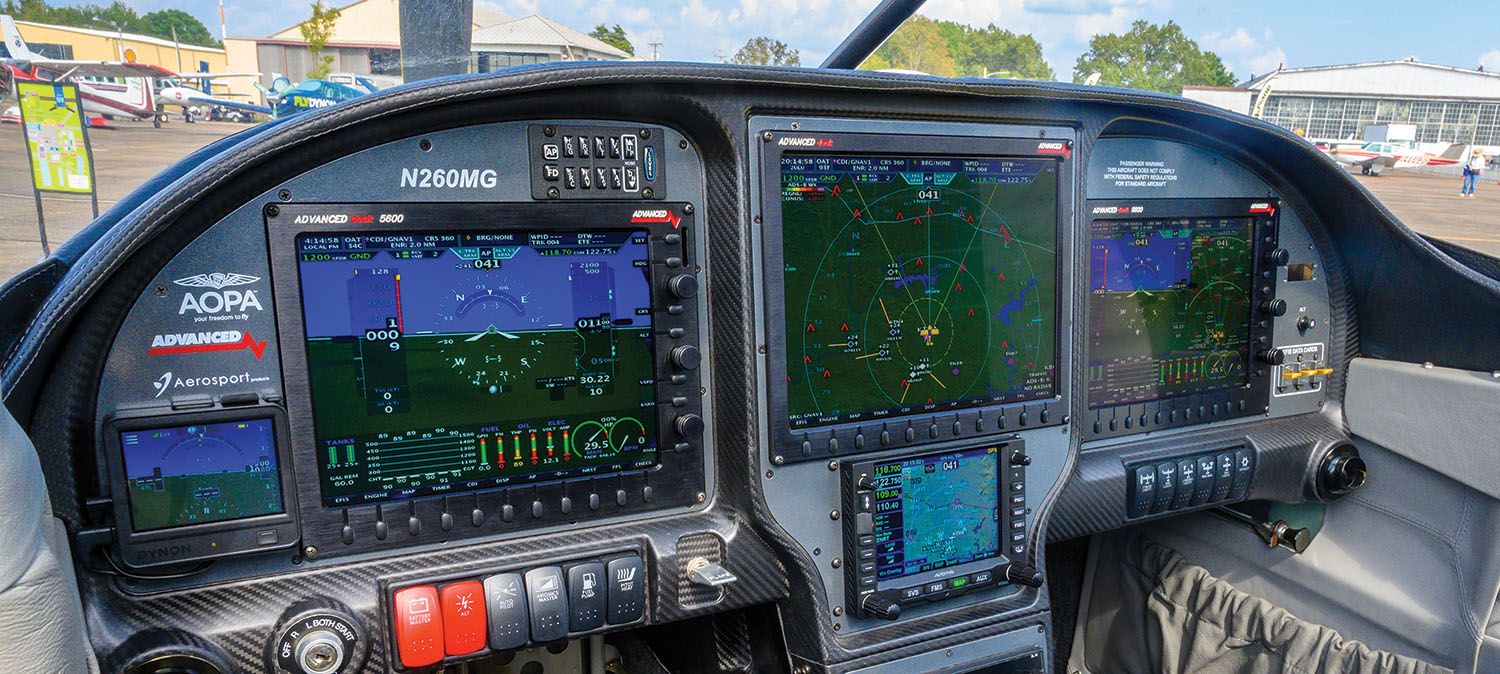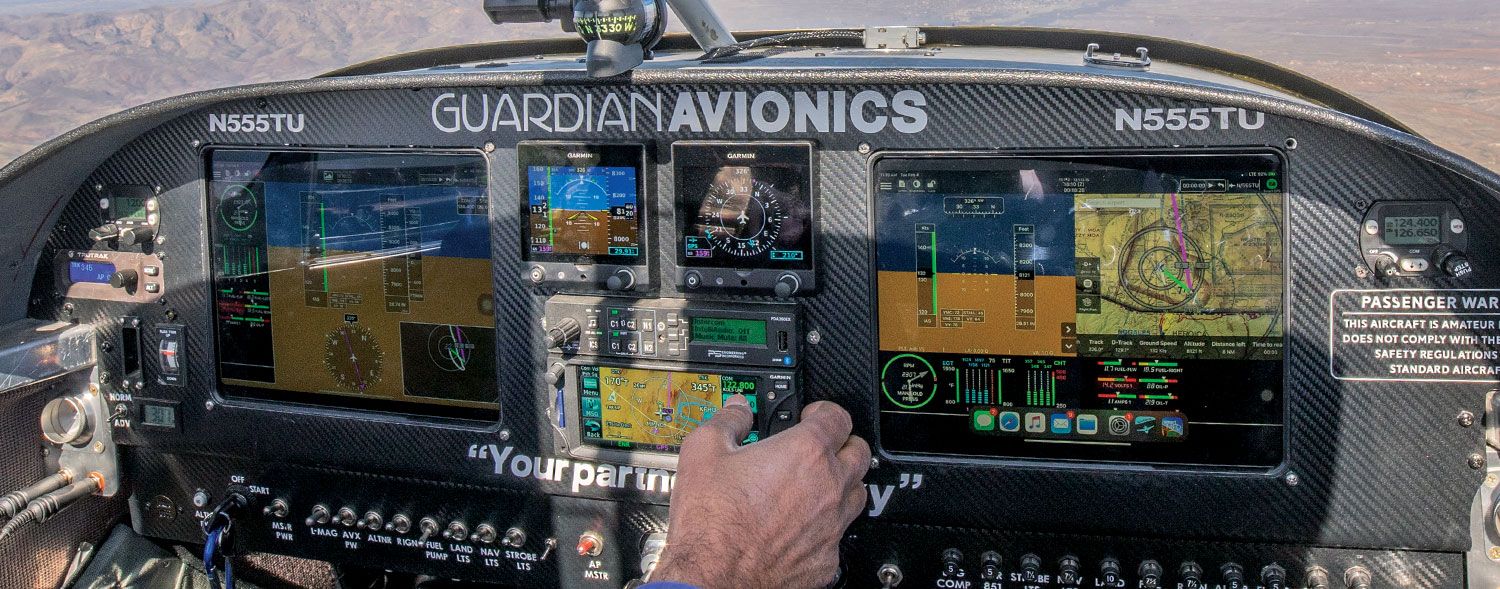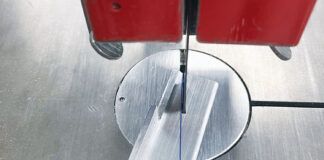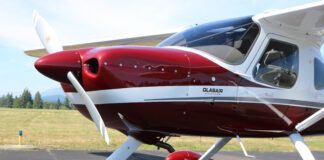
I mean, how much better should avionics really get for what we use them for? I’ll hold short of saying we’ve reached market saturation of gee-whiz gear, but I think we’re close—both in portable and panel mounts. The latest and greatest glass looks and works great, and already had its main growing spurt. Just put an eyeball on an early-gen glass panel compared to the current Advanced Flight panel shown above. We’ve come a long way, with most flagship suites probably reaching a cost and feature threshold. Maybe display quality can get better like it is in the consumer electronics market, but remember three important words in the world of Experimental kit projects: easy, reliable and affordable.
I can’t help but to look over at the certified side for a glimpse at what will likely trickle down to amateur-built aircraft, and it’s called Garmin Emergency Autoland, or at least pieces from that system. I’ve flown behind Autoland in a couple of airframes where it was clear that kit aircraft can benefit from some (if not all) of the tech that makes it work, and it wouldn’t be tough to pull off when building from scratch. The major supporting system in a full-up Autoland suite is autothrottle—something that could have good utility for the rest of us.
Aside from being an integral part of the automation that puts the airplane back on the ground better than most pilots can, an electronic servo’d throttle is a workload reducer when it is connected to the GPS system—automatically controlling power through climbs, descents, holds, approaches and yes, the landing flare. But will kit builders even want that level of automation, even when nervous spouses demand it? That probably depends on the airplane. Build a jet or turboprop and you’ll likely embrace the automation. For others, maybe not.
I’m building a little piston-powered kit because I’m the one that wants to fly it, not watch a computer do it. That’s gotta be true of most builders, especially after working all those hand tools during assembly. On the other hand, maybe it would be nice to have some backstop built into the autopilot for times when you’re sitting up straight in the seat.
To explore the avionics crystal ball, I reached out to Garmin’s Bill Stone—my go-to for all things avionics tech, and the company’s manager of business development. With his finger firmly on the pulse of the market, Stone also sees Emergency Autoland as a trickle-down system for the masses, and Garmin’s current corporate culture believes all aircraft should have it. On the other hand, he’s well aware of cost sensitivity, while also watching trends in parallel markets including automotive, which has seen big leaps in manufacturing and automation solutions (with some solutions looking for a problem).

“Autoland for the masses? Never say never,” Stone told me, reiterating that the pieces are there, but he questions the amount of money the masses may be willing to pay, especially the price-sensitive kit market. “Think outside the box, of course, but temper it with the reality of where exactly the customer sees value,” he said. For certain, Stone sees the more natural progression of electronic processors—boosting avionics horsepower for more speed, graphics and overall efficiency. That’s not innovation, of course, but a stepping-stone to better specs, better displays and hopefully easier integration. Say so long to analog tech—I believe ground-based navigation will eventually go away once more satellite backstop is in place. Good riddance, cone of confusion.
When it comes to the physical and electrical installations, I think kit builders are going to demand an easier process. One of the many reasons aircraft are spending more time on the avionics shop floor (with increasing labor costs as proof) is installation complexity. How nice would it be to connect only the power and ground wires, rather than constructing harnesses from scratch? We’re already seeing things get better in that area thanks to wiring hubs, prefab harnesses and electronic circuit breakers, and I think we’ll see more of it—to the benefit of the builder who can check off the avionics portion of the project in fewer hours with no bugs to work out once the power comes on. But a fully wireless interface? Forget it. It’s just not a good answer because it works well until it doesn’t. But that could change.

For now, dismiss the cliché that iPads will be the primary avionics solution of the future, particularly for IFR flying. In their current form they aren’t practical for belt-and-suspender reliability. Heat, for one thing, is the enemy, and tablets don’t run any cooler when installed in the panel. Still, they’ll continue to have sizable utility that I believe the market will continue to embrace long into the future. For a hint, take a look at the Guardian Avionics cloud-based smartPlane suite, which combines USB power supplies, Bluetooth transceivers and panel-installed iPads for VFR multifunction interfaces, including an engine display. It’s an impressive showing that perhaps doesn’t get enough attention.
For sure, the lack of regulatory oversight in the Experimental market means the possibilities are nearly endless, while cost and perceived value hang in the balance. As Garmin’s Bill Stone put it, “Sometimes you have to shoot for the stars and settle on the moon.”
Photos: Courtesy of Advanced Flight Systems, Garmin and Guardian Avionics.













